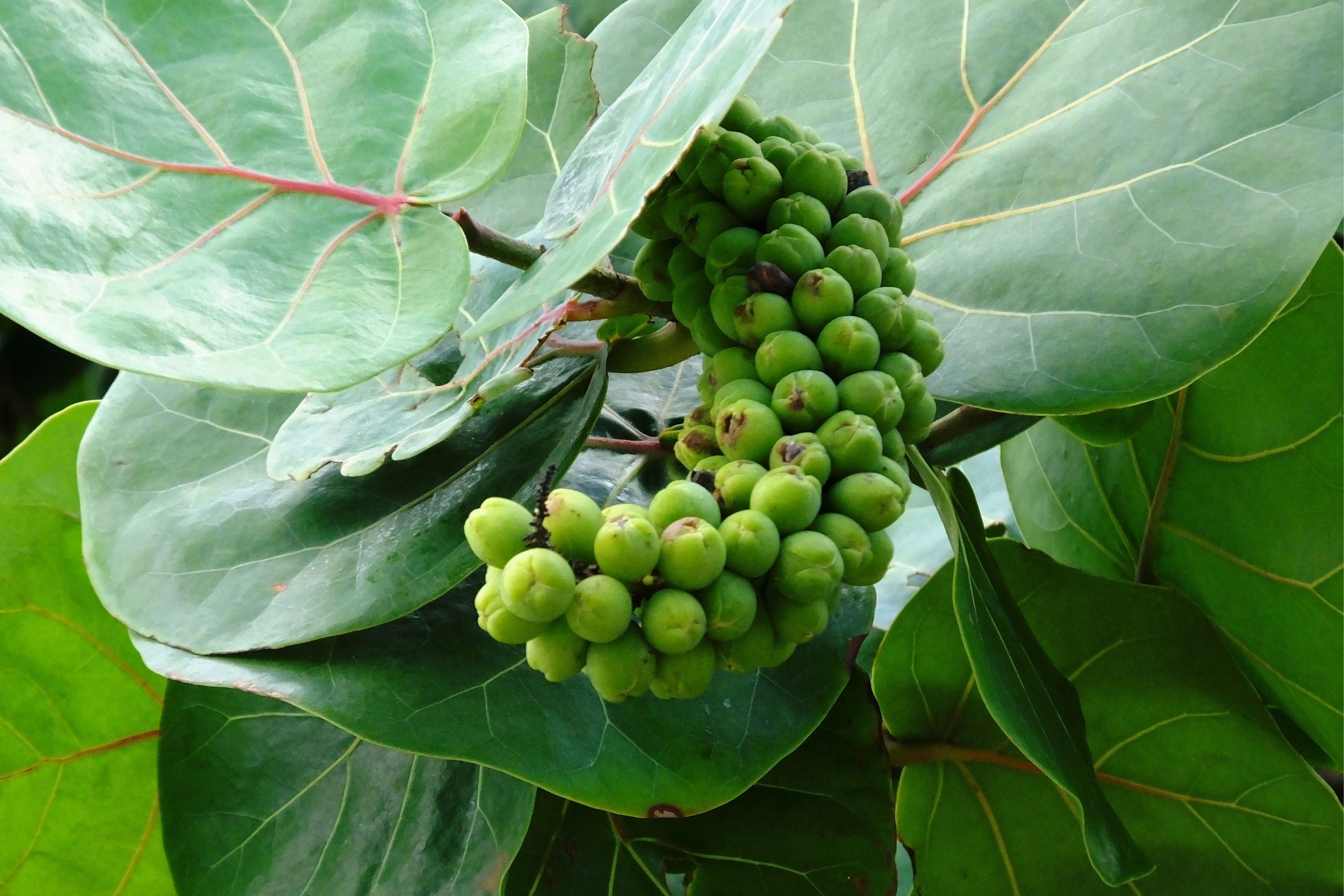Seagrape
(Coccoloba uvifera)

Description
Coccoloba uvifera, commonly known as the Seagrape, is a species of plant in the family Polygonaceae, native to the Caribbean and tropical regions of Central and South America. This evergreen tree is renowned for its beautiful foliage and edible fruit, which is also a popular snack for many coastal animals. Description Coccoloba uvifera typically grows up to 30 feet tall and 20 feet wide, with a broad, spreading crown. The tree has a stout trunk with rough, grey bark, and its branches are thick and woody. The leaves of the Seagrape are large, glossy, and leathery, with a distinctive heart shape and a dark green color. The tree produces clusters of small, fragrant flowers in late spring, which are followed by round, berry-like fruits that turn from green to red or purple as they ripen. Habitat Seagrape trees are commonly found in coastal areas, where they thrive in sandy or rocky soils and salty air. They are often planted as ornamental trees in parks, gardens, and along roadsides. In their natural habitat, Seagrapes provide shelter and food for many coastal animals, including birds, reptiles, and small mammals. Cultivation Coccoloba uvifera is a hardy plant that can tolerate a wide range of growing conditions. It prefers full sun to partial shade and well-draining soils. Seagrape trees can be propagated from seeds or cuttings, and they grow well in containers, making them a popular choice for indoor or patio gardens. Uses The Seagrape is a versatile plant with many uses. Its fruit is edible and has a sweet, tangy flavor, making it a popular snack in many Caribbean countries. The fruit can also be used to make jams, jellies, and wine. The leaves of the Seagrape have medicinal properties and are used to treat a variety of ailments, including coughs, colds, and sore throats. The tree is also commonly used in landscaping and as a shade tree in parks and public spaces. Ecological Significance The Seagrape is an important species in coastal ecosystems. Its dense foliage provides shelter for many coastal animals, and its fruit is an important food source for birds and other animals. The roots of the Seagrape are also important in stabilizing sand dunes and preventing erosion in coastal areas. Threats Despite its ecological and cultural importance, the Seagrape is threatened by habitat loss and climate change. Coastal development and pollution are major threats to Seagrape populations, and rising sea levels and more frequent storms are likely to exacerbate these threats in the future. Conservation To protect the Seagrape and other coastal species, it is important to promote sustainable coastal development practices and reduce pollution in coastal areas. Coastal restoration projects, such as planting Seagrape trees and other native species, can help to restore damaged ecosystems and provide habitat for coastal wildlife. Conclusion The Seagrape is a fascinating and important plant species with many cultural, ecological, and medicinal uses. As coastal areas face increasing threats from development and climate change, it is important to recognize the value of the Seagrape and other coastal species and take steps to protect them. By promoting sustainable development practices and restoring damaged ecosystems, we can help to ensure that the Seagrape and other coastal species continue to thrive for generations to come.
Taxonomic tree:







